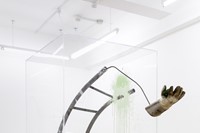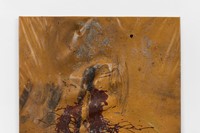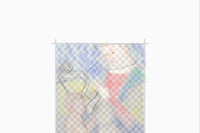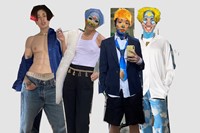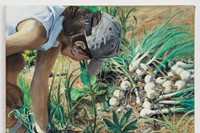The capital’s brashest, boldest and silliest art event is back. Peter Yeung takes us through Frieze London’s 2021 offering
Walking into the white-walled bowels of Frieze London, the disorientating sense of entering an alien planet hits you like a piano hurtling from the sky.
Straight up, a performer clad in art school-black is taking a deep inhale from a vape and blows the vapour into a curving tube of glass filled with holes. The bushy-haired man – part of French artist Fanny Gicquel’s installation at Hua International – then walks across to a glass container to fit his head inside and stands dead still for some minutes, eyes closed, as the remaining gas swirls around inside.
Frieze is back, baby. The capital’s brashest, boldest and silliest art event has returned once again with over 160 galleries from 35 countries for its annual, orgiastic carnival of creativity; a Burning Man for Europe’s well-heeled art world. Except, for the first time in its decade-long history, last year the grand art fair was cancelled due to the pandemic. And the experience of being trapped in their studios has apparently triggered a period of reflection for many of these artists.
“The undoing of the world as we know it has potentially become our only way to exercise hope today, while shifting the perspective on what hope and progress mean,” said Cédric Fauq, who for a new section at this year’s edition called Unworlding has commissioned works from emerging artists – including Gicquel’s otherworldly performance piece – about the creative potential of things falling apart.
“Through the use of fictional architectures, slow apocalypses and fictional scarcity … pessimism can drive imaginative agency rather than lead to immobilism or the (re)production of the world we live in,” added the 29-year-old Fauq, who is also the curator of Palais de Tokyo in Paris.
In Unworlding, there’s a lot to unpack – themes of apocalypse and regeneration, undoing and reconstruction, and plenty of less serious stuff. Gicquel’s performance is about the idea of creating a new language and a carnal way of communicating in the post-pandemic world. So there’s quite a bit of gyrating and a part where a performer uses hair straighteners to char and blacken narrow sheets of paper, emphasising that lack of human touch and interaction we all went through.
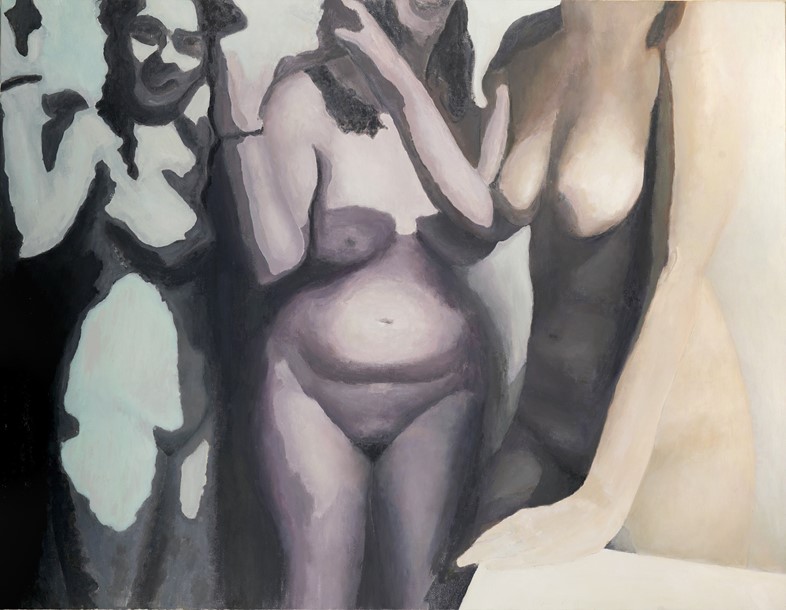
Plenty of others gravitate towards skin lust. Issy Wood of Carlos/Ishikawa has a set of amusing oil paintings based on scenes of films she binged during lockdown – the highlights being a close-up of Adriana from The Sopranos ripping a bong, and one of two strippers from Tony’s club locked in a lusty embrace. The floor is covered in a grid of tiles painted with all kinds of clocks, conveying the compression of time.
Susi Gelb at Nir Altman’s stand envisions this state of the world as one powered by algorithms. During the pandemic, the German artist sifted through old videos from previous holidays to far flung destinations like the Canary Islands and Sri Lanka and uses an AI program to randomly play clips from the footage in unique orders, never to be repeated – a way of forging something new from the ashes of the past.
Others take a more mournful tone about humanity’s predicament. Helena Anrather gallery’s Kristin Walsh, who grew up in North Carolina, has a strangely moving take on the decline of society. A large welded aluminium car engine sprawls across the middle of the gallery floor – an endless ticking noise coming from inside it, seemingly helpless.
In Below the Deep South (2021), Noémie Goudal of Edel Assanti does not beat around the bush when it comes to our imperiled future. At first, the video depicts a lush rainforest filled with tropical leaves, but gradually it becomes clear that what we are seeing is an elaborate set, which then dramatically bursts into flames.
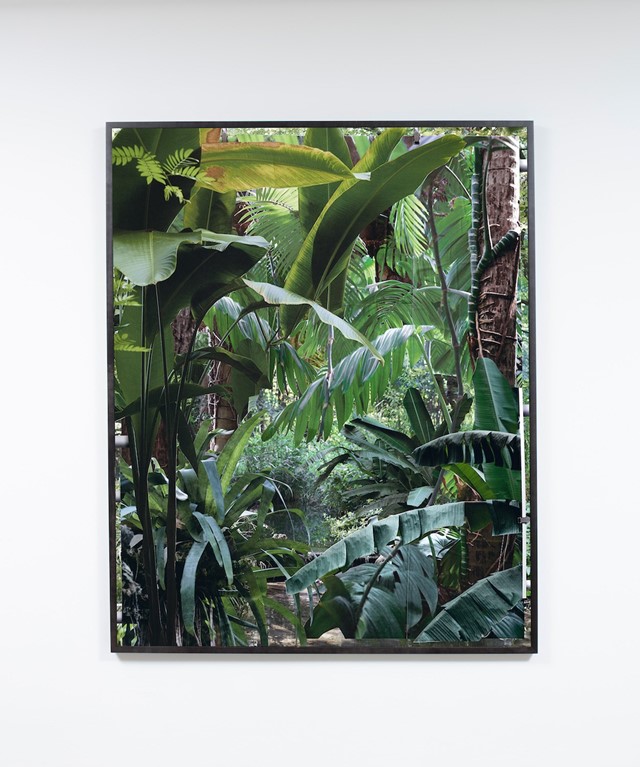
Paris-based artist Ndayé Kouagou adds to the cynicism in his video series Good People TV (2021), providing tongue-in-cheek advice on how to become a good person and undercuting the idea of society’s constant progress. “In order to be a good person, I only swallow my own fluid,” says Kouagou, lip syncing his script that is actually being read by someone else – a jarringly high-pitched nasal voice.
All of these messages add to the sense that Frieze has had a crisis of conscience. For one, the non-profit Gallery Climate Coalition, which has 550 members from 20 countries, has a stand to share tools, resources and best practice guidelines to help the commercial art world reduce its carbon footprint. A Wolfgang Tillmans print depicting a cracked tree trunk, splinters jutting out from it, is on sale to raise funds.
This is different from anything we’ve seen before at Frieze London – and the sense of a journey to another world is reinforced by new health restrictions that mean all new arrivals must obtain a grey fabric wristband in exchange for proof of Covid-19 vaccination or a negative test result.
But is it really? Would organisers really stop a billionaire collector without a Covid wristband? Are the handful of water fountains now dotted around the space really going to make a difference? There’s WiFi sponsored by Deutsche Bank, champagne bars collaborating with David Shrigley, and LG-sponsored videos of Damien Hirst’s greatest hits. To top it off, a luxury Swiss skincare brand has commissioned a piece by the artist Maoni on “the singularity of cobalt blue”. Posters plastered around the space drone on about #PositiveImpact like an overbearing yoga teacher.
Of course, there are some healthy doses of reality and the black humour of Nora Turato at Galerie Gregor Staiger is a pleasing riposte. “Something big is going to happen”, mocks the text on a LED light box with printed pink fabric. But if Frieze is projecting a vision of where society is headed, and this is our future, god help us.
Frieze London is open from Wednesday, 13 October – Sunday, 17 October 2021

